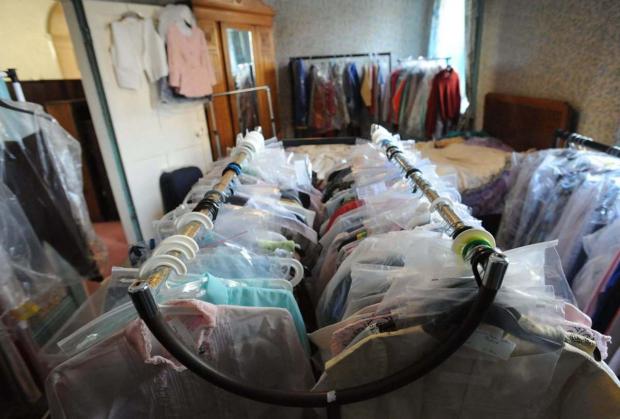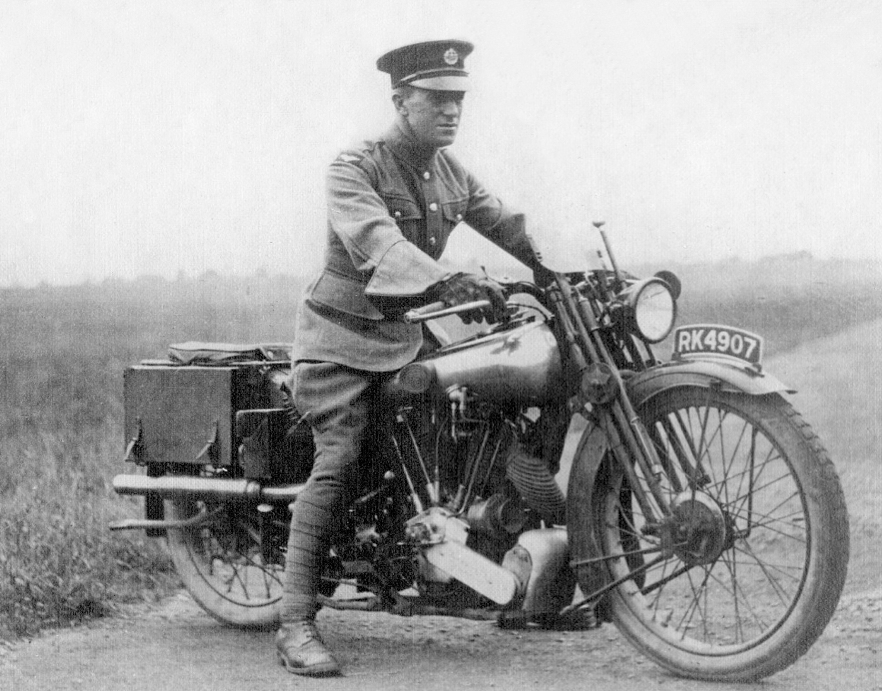It occurred to me this morning, as I was knotting my tie in the mirror, that a blog post could easily be made out of my experiences with that most noble form of trouser suspension -
braces (or suspenders, as our North American cousins call them).
Like most young lads I grew up knowing only of the common belt (or, sartorial gods forgive me, the elasticated waistband) in its standard leather or occasionally cloth form. Until my vintage conversion braces were something my grandfather's generation wore, or were seen used to comedic effect in the Laurel & Hardy films that eventually helped to steer me on to my current path.
Although I'd long held the desire to try a pair of braces for myself - subsequent to my interest in vintage - it wasn't until my declining health in 2007 and the abdominal surgery which resulted that I took the plunge and invested in a pair. By that time I was motivated as much by the need for the comfort that belts no longer afforded me as I was by sartorial considerations. Still, I imagine I would have ended up gravitating to them even without medical intervention so I can't really quibble too much about the way I came to embrace them. So with braces now a staple part of my wardrobe, it strikes me as the time to be writing a bit about them and the various forms they can come in.
The most commonly-found braces tend to be of the "clip-on" variety - that is, ones with metal clips on the end that attach to the trouser waistband. Clip-ons tend to be largely vilified in the vintage world and not without reason. Their biggest flaw is also their major aspect - the clips themselves. Over time they
will end up damaging the cloth around the waistband. Some better quality examples may have inner plastic grips to try and lessen this problem but it can never be entirely eradicated. If the clips do not have a firm grip on the fabric they will also have the unfortunate tendency to come adrift from the trouser. While this doesn't result in the trouser-dropping embarrassment so beloved of comedy films, nor cause you to lose an eye, it is blimmin' frustrating as one side of your pantaloons begins to list and you struggle to readjust them, tuck in your shirt and reattach the errant clip all at the same time. Equally the action of the clip coming away from the cloth and the need to re-establish a secure fastening simply exacerbate the first fault mentioned.
The top two factors in favour of clip-ons are their ubiquity and low prices. Although they can be found in most high street clothing emporia they are still a rare breed there, usually consisting of the standard evening wear black, white or (occasionally) gold, the somewhat lamentable novelty patterns and the "skinny" varieties favoured by hipsters and the like. More on those points later.
Practically every online [vintage or vintage-inspired] clothes retailer will have a decent selection of clip-on braces, however. I tend to use
Tom Sawyer Waistcoats or
Darcy Clothing but you may have your own preferred source and indeed any of the shops in the Classic & Vintage Clothing & Accessories list to the left should offer something for all tastes and purses. Yes, that's right - most of my braces are clip-ons, in spite of all I have said against them. Of course I would ideally like proper leather-ended button-on braces and that is still my goal but if, like me, you have limited funds and several pairs of belt-looped high street trousers then there is still a lot to be said for clip-ons.

They are not the only avenue open to those of you unwilling or unable to stretch(!) to button-on braces, however. It is possible, for example, to buy
clip-on buttons, which work in exactly the same way as clip-on braces but allow for the use of leather-ended braces that are usually the preserve of properly-tailored trousers. The downside is they still have all the negative qualities of clip-on braces as covered earlier.
Actual buttons for braces can also be bought separately and sewn on to the waistband of your existing trousers. Beware, however - the trews must have a fitted waistband (that is, sewn into and properly attached to the trousers) and not just a folded over loose type, which will only result in the braces pulling the buttons/waistband in and up creating an ugly effect. In my experience the buttons are also hard to come by unless you're willing to spend time rummaging around in the buttons bin at your local second-hand shop. The only place I've been able to find that sells them separately online is a shop called
Kleins. (
Bromleys also sell them with their braces, however) Although theoretically any old buttons should do the job, proper braces buttons ideally need to be specially shaped to facilitate the holding in place of the leather straps (see above).
There's much discussion about the placing of buttons too. General consensus seems to be on the inside of the trouser at the front and outside at the back (the former giving a clean appearance, the latter lessening any chance of discomfort from buttons digging into your back), although I've seen many a different variation (my recent Darcy acquisition, for instance, has all the buttons on the outside. Exactly where to put them for the best fit can depend on your body shape and is usually a case of whatever feels best, although there is advice out there which tells of ideal distances from pleats, seams etc.
The next attachment option I absolutely beg you not to take, as I simply cannot believe anyone could honestly think they are a good idea. I only mention them for the sake of completeness and, more importantly, as a warning. Ladies and gentlemen - the
Instant Buttons for Braces. (I know, I apologise!) I first came across these some months ago and I'm still struggling to come to terms with the idea that anyone could seriously advocate
hammering a screw through the waistband of your trousers. It is so, so wrong on every conceivable level. I don't need to tell you what that will do to the fabric of your trews. I daren't ask you to imagine what will happen if they're subjected to lateral forces, the kind of which might be applied by, oh I don't know, a tensioned length of elasticated fabric... Honestly, if you take only one thing away from this post, it's this -
avoid these!
From the ridiculous to the sublime now; the only true way to attach your braces - with fitted buttons! No damage to your trousers. No braces coming away unexpectedly. Only secure, integrated attachments that allow you to make full use of traditional, proper leather-ended braces. They may be harder to find, they may cost more than the alternatives but by Jove! they're worth it in the long run. Teamed with a pair of high-waisted/fishtail back trousers they're nigh on unbeatable. One day my wardrobe will be full of them only! Darcy's again are my go to shop for these, although many other online outlets will offer similar at various prices. Be sure to look out for the name Albert Thurston, which is generally agreed to be the Rolls-Royce of braces - and why not, considering the original Albert Thurston invented the things (as we know them today) in 1820.
That's more than enough to be going on with for now, I think. This post is already threatening to become a bit of a monster, so I think I'll split it into two. I shall return with the second part of Braces with Bruce(!) - hmmn, not a bad alternative title - in a few days' time, when I will focus on the different colours and styles of braces available, plus some of my own daily experiences as a wearer of them.
But for now, Tinkerty-tonk!





















.jpg)











